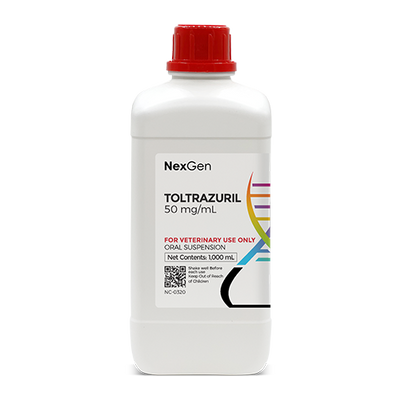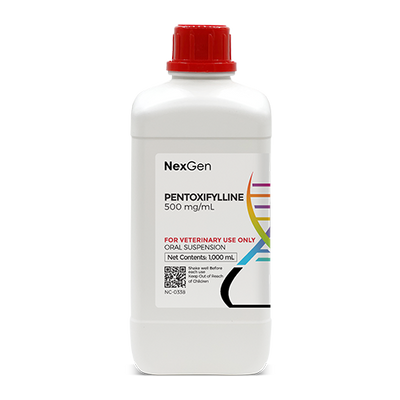
Isoxsuprine HCl 50 mg/mL, Oral Suspension, 1000mL
Login for pricing
- Brand
- Mixlab
- SKU:
- NC-0503
- Product Type:
- Suspension
- Size:
- 1000ml
- Administration:
- Oral
Navicular disease in horses (also known as navicular syndrome) is the result of inflammation or degeneration of the navicular bone and the surrounding tissues. The navicular bone is located between the pedal bone and the deep digital flexor tendon. This condition, which typically occurs in the front feet of the horse, can lead to disabling lameness in a horse. Navicular disease is believed to be genetic, but it can also occur due to the conformation of the distal limbs.1 It is not to be confused with laminitis; although some of the treatment regimens are the same, laminitis is a condition of the hooves themselves and primarily involves the digital laminae within the hoof.2
The cause of navicular disease is not precisely known, although it has been suggested that damage to the navicular bone may occur due to interference with blood supply or trauma to the bone itself.1,3 Navicular disease is generally described as being slow or intermittent in onset, ultimately presenting with bilateral lameness,1 after which the condition progressively deteriorates. Navicular disease appears to have a hereditary component, and usually occurs in horses from 8 years old on. It tends to be overrepresented in some breeds and rarer in others.
Understanding Navicular Disease
It was once believed that navicular disease involved a degeneration of the navicular bone only, but it is now acknowledged that navicular bone involvement is just part of the condition. Navicular bone disease forms part of navicular syndrome, with the other components being the involvement and degeneration or damage to other structures in the foot. The foot structures that can be involved in navicular syndrome include:
-
Navicular bone
-
Navicular bursa
-
Suspensory ligaments of the navicular bone
-
Impar ligament
-
Deep digital flexor tendon
-
Coffin joint
-
Collateral ligaments of the coffin joint
In horses with navicular disease, any combination of these structures may be involved.
Isoxsuprine for Equines
In horses, isoxsuprine does not appear to possess significant analgesic properties.
After parenteral administration, horses may show signs of CNS stimulation (e.g., uneasiness, hyperexcitability), tachycardia, and increased cardiac output, or sweating, although these signs are typically short-lived. Adverse effects are unlikely after oral administration but hypotension, tachycardia, and mild GI effects are possible.1
Where to buy Isoxsuprine
Isoxsuprine is available in the U.S. through several pharmaceutical manufacturers and through veterinary custom compounding companies.
Please consult your veterinarian prior to beginning any treatment regimen.
FOR RX ONLY: A valid prescription from a licensed veterinarian is required for dispensing this medication.
1Merck Veterinary Manual.
4Plumb’s Veterinary Drugs.




















